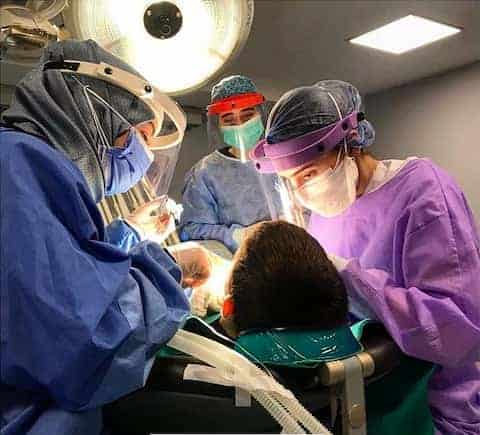Orthodontics is a specialty of dentistry that deals with the prevention, diagnosis and treatment of disorders related to teeth and jaw bones.
While both dental and skeletal problems can be treated in individuals who continue to grow and develop, skeletal problems in adult individuals can be treated with orthodontic treatment and orthognathic surgical procedures.
Environmental and hereditary factors or both may be effective in the occurrence of orthodontic problems. Genetic factors are generally effective in jaw stenosis, jaw bones being ahead or ahead of each other. Caries in deciduous teeth, early loss of deciduous teeth, finger sucking, long-term use of pacifiers and bottles, pen-biting, nail biting, lip and finger sucking, on the other hand, are environmental factors.
Most of the patients who come to the clinic for orthodontic treatment are treated due to aesthetic concerns. However, with orthodontic treatment, gum and joint problems that may occur at the same time are prevented. The proper alignment of the teeth provides better brushing; The fact that the jaw bones are compatible with each other also helps protect the health of the jaw joint.
Orthodontic examination should be done with the beginning of the mixed dentition period. (6-8 years old) The target in this period is to detect and prevent habits such as finger sucking, nail biting, mouth breathing that may cause orthodontic problems. Again, early orthodontic examination is of great importance for the diagnosis and treatment of incompatibilities between jaws. Solving dental problems with orthodontics is usually done during the permanent dentition period (10-12 years old).
They are movable or fixed orthodontic appliances that are made to prevent parafunctional habits such as finger sucking and swallowing disorders from creating orthodontic problems in the future.
These are appliances that are made to provide sufficient space for permanent teeth in children who are thought to have a problem of crowding in the future or who have jaw stenosis. Generally, fixed orthodontic treatment (bracket treatment) is required after this treatment.
It is a treatment method for children whose growth development continues to make the lower and upper jaws compatible with each other.
It is a treatment method performed by applying brackets in order to solve the dental and non-advanced level bite problems during the permanent dentition. There are 2 types of brackets as aesthetic and metal.
It is a fixed treatment method applied by bonding the braces to the back surfaces of the teeth.
With the developing technology, orthodontic treatment is possible with plaques that are no longer visible and can be attached and removed. With this treatment, aligners are produced in a laboratory environment by providing tooth movements in digital environment from the measurements taken from the patient and these aligners must be used continuously. (except for eating and drinking)
Orthodontic treatments take 1.5 years on average; It may vary depending on many factors such as the severity of the patient's problem, age and compliance with treatment.
With orthodontic treatment, appointments are usually made every 4-5 weeks. In some treatments (such as rapid upper jaw enlargement), the patient may need to be seen every 1-2 weeks.
With orthodontic treatment, teeth are moved within the jawbone. There are some changes in the jawbone to ensure the movement of the tooth. After the treatment, it takes about 1-2 years for the jawbone to recover. During this period, there is a risk that the teeth will return to their previous state and therefore reinforcement treatment should be performed. Reinforcement treatment is performed with a retainer wire attached to the back of the teeth or with transparent plaques used at certain times of the day.
